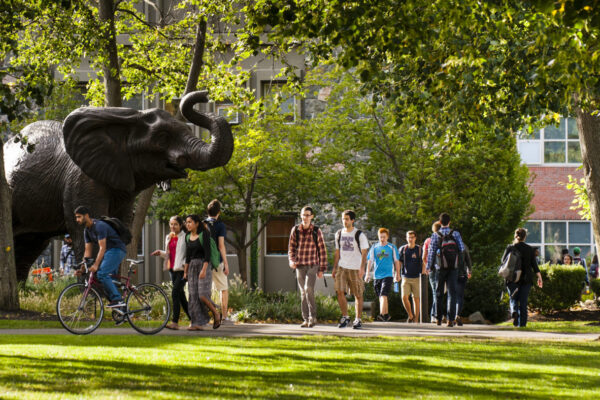Creating U.S. Higher Education Partnerships with Chinese Institutions
A session at ACE2016 focused on how to create and sustain lasting higher education partnerships between U.S. and Chinese institutions.
Speakers included Lizhong Yu, chancellor of Shanghai New York University; Tomas Morales, president of California State University, San Bernardino; and Mary Brown Bullock, president emerita of Agnes Scott College (GA).
The session was moderated by Brad Farnsworth, vice president of ACE’s Center for Internationalization and Global Engagement.
Lizhong said China’s goal is to be a higher education destination, and they are rapidly expanding their higher education system to achieve it.
In the last 10 years, higher education enrollment in China grew from 15 percent to 40 percent and is expected to grow by 50 percent by the end of the decade. The main issue is whether the quality is keeping up with the expansion. China is looking to learn from the United States and other Western countries, Lizhong said.
The panel discussed a range of subjects, including the components needed to build successful partnerships and the challenges to expect.
Morales said he looks at these partnerships as “a two-way street.” Not only does he recruit Chinese students to study in the United States, he also encourages U.S. students to study in China, a bigger challenge. Americans often struggle with learning Chinese. In his continuing efforts to attract more students to the program, Morales has gotten faculty and alumni involved, sending over 20 faculty members to China, hosting more than 50 Chinese scholars, and even hosting an alumni reunion in Beijing.
Lizhong said that Shanghai New York University is a small school with a great student to teacher ratio. The school admits 300 students every year—half from China and half from other countries—and has 250 faculty.
If he could describe higher education in China in one word, it would be “competitive,”Lizhong said. Most Chinese universities are public, so if they want to get more funding, they have to compete for government funds.
Mary Brown Bullock is the executive vice chancellor of Duke Kunshan University, a new international university jointly founded by Duke University (NC) and Wuhan University of China.
Bullock said quality, autonomy and rankings are some of her biggest challenges.
“Chinese education has gone through huge growth in the past few years, with the merging of institutions that have had to find their identities,” she said. “There has also been a focus on quality. In China, there is a huge emphasis on rankings. This is because China has set the goal of having world-class universities in the near future.”
When thinking about creating joint programs with Chinese institutions, U.S. institutions need to first ask themselves three questions, according to Lizhong:
1. Why? You need to be very clear in your intentions.
2. What is the goal for the program?
3. How will you define and reach your goals?
He suggests not beginning a joint venture until those answers are clear. He also emphasized the importance of both institutions having similar goals and interests to ensure the stability of the partnership.
Bullock suggested institutions ask themselves what their missions are and to make sure their internationalizion efforts align with their strategic plans.
“It is very important that you take a long-term perspective in this regard,” she said. “You have to be willing to be persistent. It really involves making an investment in people, time and funds.”
Bullock also suggested that institutions really pay attention to faculty interests.
“It makes such a difference when faculty lead the effort for internationalization,” she said. “Exchanges should not just depend on students and administrators. If faculty are interested in something, they will bring the students along with them.”
If you have any questions or comments about this blog post, please contact us.


